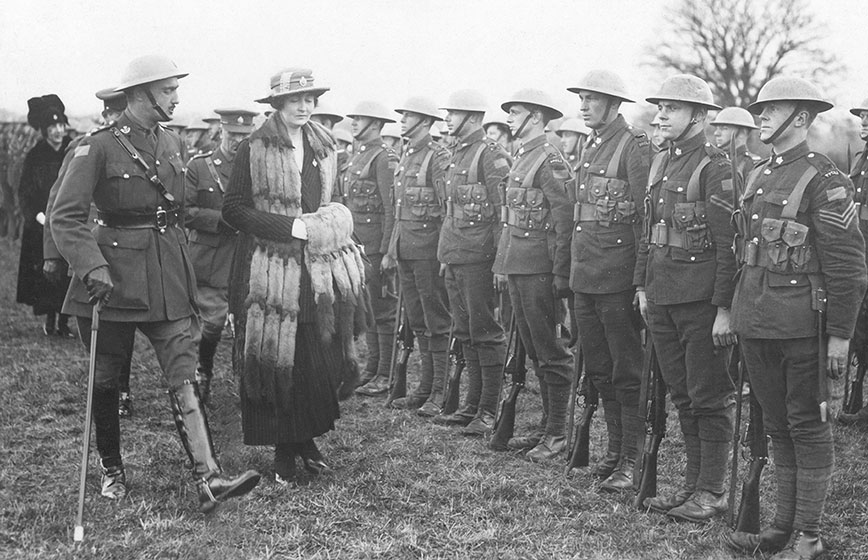
Lieutenant-Colonel Hamilton Gault and Princess Patricia of Connaught inspect the Princess Patricia’s Canadian Light Infantry at Bramshott Military Camp in England on Feb. 21, 1919. [PPCLI Archives]
The salient was a thorn the Germans intended to remove from their side, fighting four battles between April 22 and May 13, 1915, together known as the Second Battle of Ypres.
On April 22, 1915, the Germans fired on French and Canadian lines and released chlorine gas in the Battle of Gravenstafel Ridge. Between April 24 and May 4, during the Battle of St. Julien, they pushed the Allied front back to less than 10 kilometres from Ypres, where the Allies dug in at Frezenberg Ridge.
On May 8, the Germans attacked the trenches on the forward slope of the ridge. The towns of Frezenberg and Verlorenhoek fell.
The Germans’ third assault created a gap in the line. Heavy fire had destroyed whole sections of the British front line, creating a three-kilometre gap. At 9 a.m., the Princess Patricia’s Canadian Light Infantry held one shoulder of the gap.
The Patricias were pounded for nearly 15 hours. They lost two of their four machine guns, and with casualties high, signallers, pioneers, orderlies and batmen were ordered into the trenches to back up the front line. Reinforced by the 4th Rifle Brigade, the Patricias “stood unflinchingly for the rest of the day, enduring repeated bombardments and beating back every German attempt to advance from the captured trenches.”
When they were relieved at midnight, the Patricias had suffered 392 casualties and had but four junior officers and 150 men still on their feet. Major Hamilton Galt, who founded and funded the regiment, and other senior officers were all wounded. Command passed to Lieutenant Hugh Niven, who reported that Gault, lying wounded, instructed him that “next time they come, stand me up, face me the right way and give me my revolver.”
The Patricias had prevented any farther advance by the Germans, and it was here their unofficial motto was coined: “Holding up the whole damn line.”
The Battle of Frezenberg ended May 13, 1915. But the Germans attacked again 11 days later in the Battle of Bellewaarde, the last of the four battles.
The Second Battle of Ypres reduced the salient by about half, at the cost of some 120,000 casualties—59,000 British (including about 6,500 Canadians), 22,000 French and 35,000 Germans.
Advertisement



















